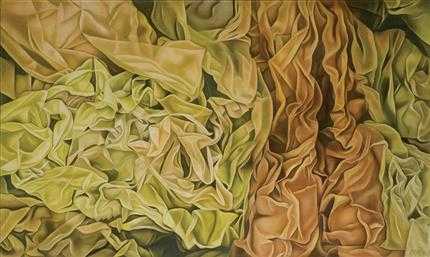About Mehrdad Sadri
Mehrdad Sadri (1944-2019) spent most of his life in Austria as a painter and sculptor. However, he believed that his works had an Iranian flavor. This is because he was raised in Iran and what he brings to the tableau is the feelings that have been passed on to him over the years.
Mehrdad Sadri was born in the Shapour neighborhood of Tehran. At first he was interested in architecture, but later he became interested in painting. He obtained his degree from the Department of Decorative Arts and Textiles at the Vienna University of Applied Arts. A few years later, he received his master's degree in art education from the same university and started teaching. After 25 years of teaching, Sadri sought early retirement to pursue his artistic career with greater focus. He has held many exhibitions inside and outside of Iran, one of the most significant of which is the display of his works in the Tehran Museum of Contemporary Art under the title "Being with yourself and the world".
His first substantial collection is called "Movement". It was made using the printing technique in the 1970s, and a sense of movement and volume can be seen, the basis for his subsequent collections. The next collection is "a collection of compatible opposites" from the 1980s. The reason for choosing this title was the existence of works in different mediums such as collage, painting and other techniques. In addition, there was the presence of geometric forms alongside organic and natural forms. In his third collection in the 90s, after experiencing abstract space and organic forms, Mehrdad Sadri paid attention to texture. The collection named "Texture" includes works in the form of metal volumes, some of which are presented in the Museum of Contemporary Art. Rug weaving technique is used in this collection.
One of the reasons why Sadri's works are considered oriental, despite their often abstract nature, is the image's lack of focus on the figure. Even though fabrics and organic forms are sometimes arranged in a way that is expressive of the body or face, the abstract atmosphere remains dominant. Organic forms in many of Sadri's works are realized through tape-like fabrics that go to the imaginative border of linearity. As the artist himself says: "My work shows the human body in the fragmented associations suggested by the Chinese. This suggestion does not refer to man as an object of individual beauty; it is merely an abstraction of beauty and is by no means a real image."
The Most Expensive Artwork
At Auctions
First Attendance
29 May 2015
# Attendance
3
# Artworks
3
Average Realized Price
13,112 USD
Average Min Estimate
9,014 USD
Average Max Estimate
12,604 USD
Sell-through Rate
100%
Average Growth of Artwork Worth
26.667%
Timeline
A Selection of 70 Years of Iranian Sculpture exhibition
4 August
Nūr exhibition
21 August
هشتمین دوره حراج تهران auction
12 January
The 6th Tehran- Contemporary Iranian Art auction
23 December
چهارمین دوره حراج تهران auction
29 May
